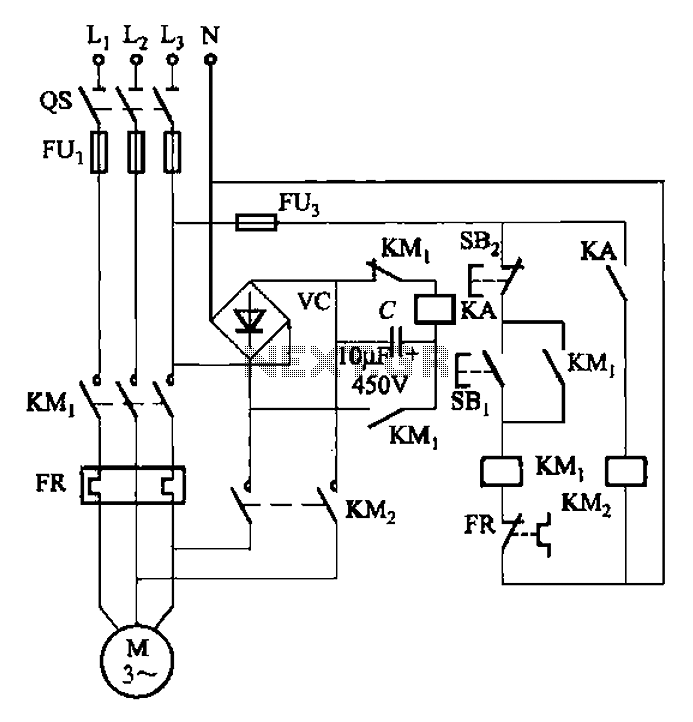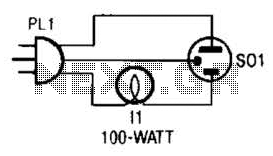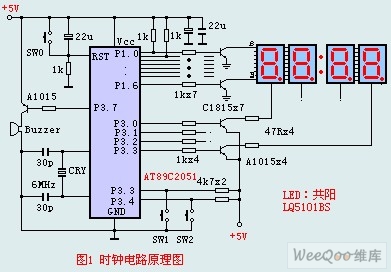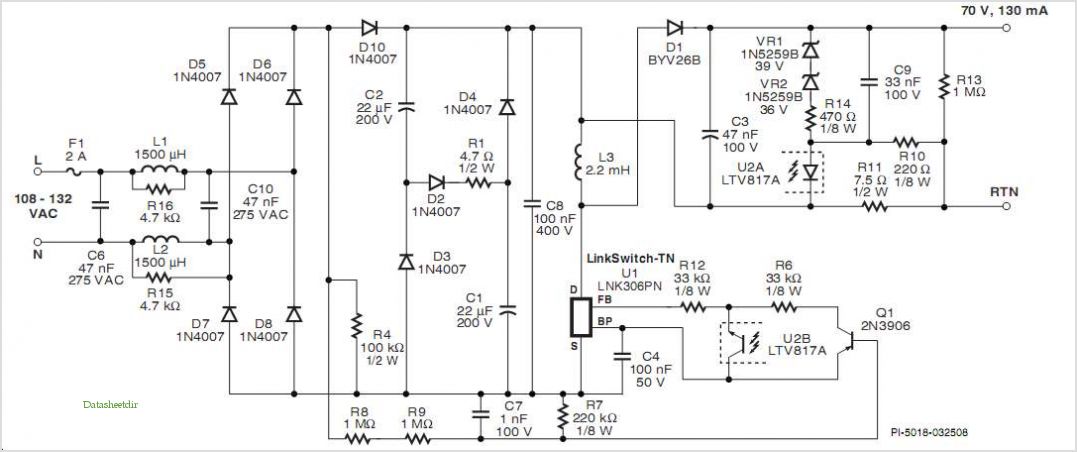
Five-way operation of the dynamic braking circuit

The circuit depicted in Figure 3-137 eliminates the need for a step-down transformer by utilizing the principle of energy storage capacitor discharge for braking. It can be employed to transform the power of motors with a rating of less than 1 kW. The duration of braking is adjustable and depends on the resistance of the relay KA coil, the capacitance of capacitor C, and the release current of KA. The general capacitance of capacitor C can be modified to alter the braking time.
The circuit operates by discharging a capacitor to provide a controlled braking action for small motors. When the motor is to be stopped, the capacitor C is discharged through the relay KA, which is activated by the circuit control mechanism. The energy stored in capacitor C is released, creating a braking force that slows down the motor.
The relay KA plays a crucial role in this circuit by controlling the discharge path of the capacitor. The resistance of the relay coil affects the timing of the relay's activation and, consequently, the braking duration. By adjusting the resistance and the capacitance values, the user can tailor the braking performance to meet specific requirements of the application.
Capacitor C must be selected based on the required braking time and the characteristics of the motor. Larger capacitance values will result in longer braking times, while smaller values will decrease the duration. The release current of the relay KA must also be considered, as it determines how quickly the relay can disengage after braking is initiated.
This circuit configuration is particularly beneficial for applications where a transformer is impractical or where space and cost savings are desired. The energy storage capacitor discharge method provides an efficient and effective means of controlling motor braking without the complexity of additional transformer components. Circuit shown in Figure 3-137. This eliminates the need for a step-down transformer line, using the principle of energy storage capacitor discharge realization brake, it can be used to transform infrequent power llkW less motor. Braking length of time, depending on the relay KA coil resistance, capacitance C of capacity and KA release current adjustable capacitor C general capacity to alter the length of the braking time.
The circuit operates by discharging a capacitor to provide a controlled braking action for small motors. When the motor is to be stopped, the capacitor C is discharged through the relay KA, which is activated by the circuit control mechanism. The energy stored in capacitor C is released, creating a braking force that slows down the motor.
The relay KA plays a crucial role in this circuit by controlling the discharge path of the capacitor. The resistance of the relay coil affects the timing of the relay's activation and, consequently, the braking duration. By adjusting the resistance and the capacitance values, the user can tailor the braking performance to meet specific requirements of the application.
Capacitor C must be selected based on the required braking time and the characteristics of the motor. Larger capacitance values will result in longer braking times, while smaller values will decrease the duration. The release current of the relay KA must also be considered, as it determines how quickly the relay can disengage after braking is initiated.
This circuit configuration is particularly beneficial for applications where a transformer is impractical or where space and cost savings are desired. The energy storage capacitor discharge method provides an efficient and effective means of controlling motor braking without the complexity of additional transformer components. Circuit shown in Figure 3-137. This eliminates the need for a step-down transformer line, using the principle of energy storage capacitor discharge realization brake, it can be used to transform infrequent power llkW less motor. Braking length of time, depending on the relay KA coil resistance, capacitance C of capacity and KA release current adjustable capacitor C general capacity to alter the length of the braking time.





